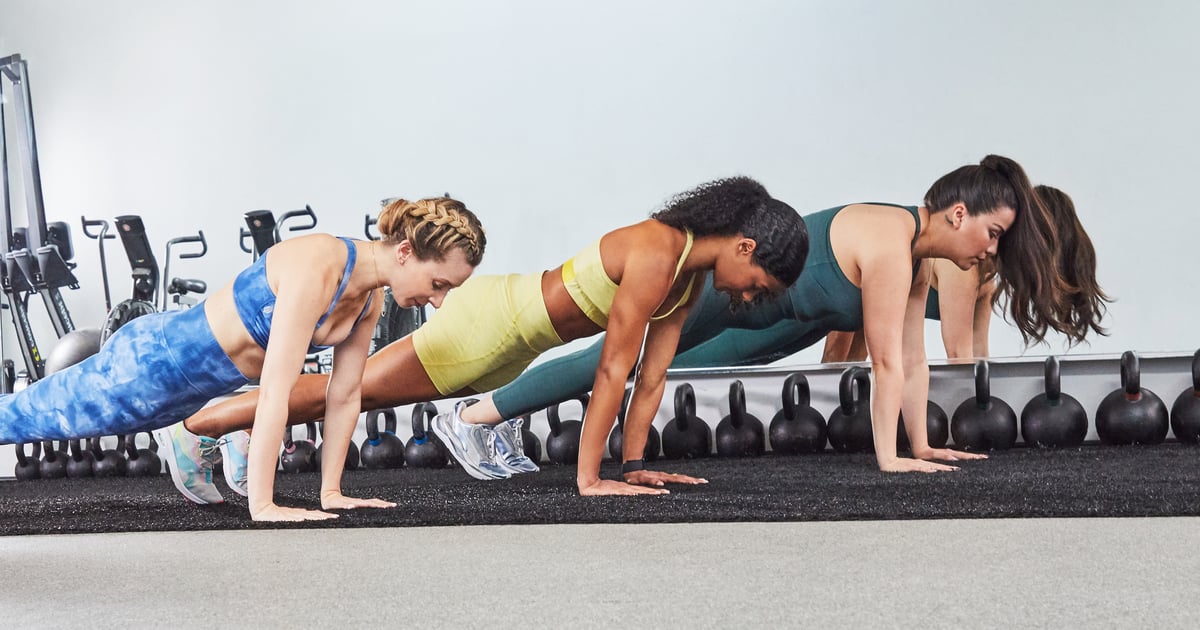As far as workouts go, planks are your bread and butter. Dependable and simple, this staple core exercise is accessible for beginners, challenging for advanced exercisers, and customizable in countless ways. It’s easy to be seduced by showy moves that use novel equipment or complex movement patterns, but you shouldn’t sleep on planks no matter where you are in your fitness journey. Really, the vast majority of people would be better off with more planks in their life.
So why are planks so great, and how do you make sure you score all the benefits? This guide has everything you need to know about the plank exercise, including the benefits of planks, how to do a plank properly, and the best plank variations to choose from, depending on your needs.
The Benefits of Planks
Planks are known as a core exercise. They drill down on core stability, which is important for transferring energy and movement between your upper and lower body and protecting your spine.
But the benefits of planks don’t stop at your abs. “Planks target the entire body, which makes them efficient and effective,” says Robin Long, founder of Lindywell Pilates.
If you want to know exactly which muscles we’re talking about here, research shows planks work your rectus abdominis, obliques, transverse abdominis, and muscles along your spine (all part of your core). But research also shows that planks engage your quadriceps, glutes, shoulders, chest, and upper back.
“Some of the benefits of incorporating planks consistently into your routine are improved posture, increased core strength, and decreased back pain,” Long adds. Because planks are an isometric exercise (read: you’re holding still in one position), they’re great for building up endurance of all those muscles, too. That pays off when you need to use your core for an extended period of time, whether it’s to stay on your feet for a while or maintain posture while sitting at your desk.
Plank Exercise Form Tips
Planks are simple, but it’s actually really easy to do them wrong. “It’s important to be mindful of your alignment and positioning during planks, maintain conscious core engagement, remember to breathe, and modify when needed,” Long says.
For example, “a common mistake I see in traditional planks is people dropping their hips so low that they end up with a hyperextension (or arch) in the lower back,” Long explains. That puts unnecessary strain on your lumbar spine (aka your lower back), and it’s also “uncomfortable and inefficient,” she says. The fix? “Focus on keeping your hips in line with your spine, keeping your lower back long, and envision that you are drawing the tips of your hip bones closer together — this will help to activate deep core engagement and protect your lower back,” she says.
Another common mistake that shows up in both high planks and elbow planks is sinking down between the shoulder blades, Long adds. “Instead, think of pushing the ground away from you, filling the space between your shoulder blades. This will activate the muscles of the upper back to help you get more out of the exercise while also protecting your shoulders and reducing your risk of injury.”
That said, it is possible to round too much into the upper back. If you’re feeling the work only in your upper back and not at all in your core, make sure your upper back isn’t domed upward; instead, think about opening up your chest. This will help you find the sweet spot for your shoulder blades. Research confirms that the exact plank form that results in the most core muscle engagement is one in which your shoulder blades are reaching toward each other and your tailbone is slightly tucked.
It might sound like a lot to keep track of, and it is. (After all, this is a full-body exercise!) If you can’t have a trainer check out your form, doing planks in front of a mirror or recording yourself on your phone can help you see whether you’re in the right position.
How to Do a Plank Correctly
There are tons of different ways to do planks — and we’ll get to some of those plank variations shortly — but a high plank (think: top of a push-up) is considered the “original” way to do one. Here’s how to do a plank correctly.
- Start on all fours with your hands and knees on the ground. Your hands should be directly below your shoulders and knees directly below your hips.
- Extend one leg straight behind you, then the other leg, so your feet are about hip-width apart and you’re balancing on your palms and toes. Your body should form a straight line from the top of your head to your heels. Keep your neck long, looking down at the floor about a foot in front of your hands.
- Hold this position, thinking about pulling your belly button in toward your spine, tucking your tailbone slightly, and maintaining a proud chest.
Plank Cautions and Modifications
If you have wrist pain during planks, try switching to a low plank or elbow plank. When on your palms, you should also be pressing into the floor with all five fingertips to help take the pressure off your wrist.
And while a regular plank is a simple exercise, it can still be a lot for beginners. Keep reading for plank exercise variations, including one that’s easier than a regular high plank.
Like with all exercises, if you feel pain, stop doing that move. Consult a certified trainer for a form check, and consider seeing your doctor if the pain persists.
